A frictional force is an opposing force that develops at the surfaces of contact of two bodies and opposes their relative motion. In this article, we will learn about four different types of friction.
4 Types of Friction
Basically, we can divide friction into two types: Static and Kinetic Friction. However, the kinetic friction is again of two types: sliding and rolling friction. So, all together the four types of frictions are:
Briefly speaking, when we push a block lying on the floor with a small force, it does not move. If we increase the magnitude of the force, it then starts to move.
This opposing force that prevents the body from moving falls under the category of static friction.
Similarly, when left freely, a moving object comes to rest after covering a certain distance. That means there must be a force between two surfaces in contact such that the relative motion between them is opposed.
This type of opposing force falls under the category of kinetic friction.
1. Static Friction
When a block is resting on a horizontal surface, it presses the surface due to its weight mg. The surface pushes up on a body with a force perpendicular to the surface called normal reaction, R.
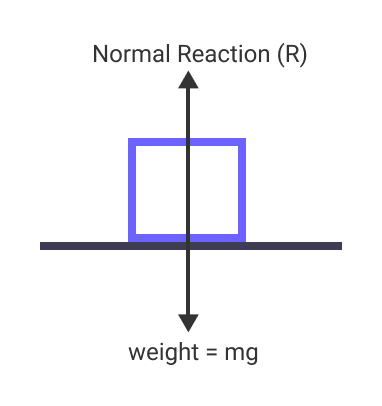
If no other force is acting, R = mg as shown in the figure above.
If we apply a horizontal force F on the block, it does not move. It means whenever we apply a certain force to move the block; an equal and opposing frictional force is developed between the horizontal surface and block.
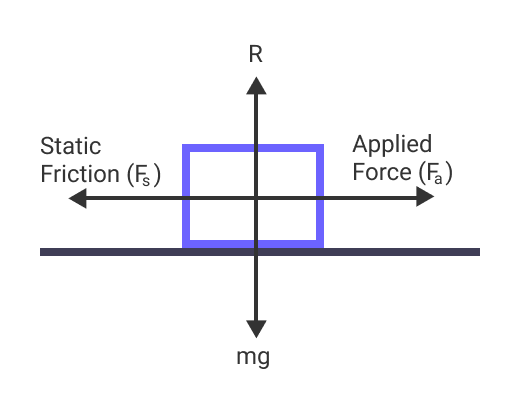
If we keep increasing the magnitude of the applied force, the block will start to move at some point. In this case, the applied force will exceed a certain opposing limiting value.
This force of friction produced between the block and surface just before the block starts to move is known as static friction. When the body is not moving, the static friction equals the applied force.
Facts about static friction
Minimum value of static friction
The minimum value of static friction is 0 when no external force is applied to the body. This is because if we don’t apply any force, there won’t be any opposing friction force as well.
Limiting Friction
The value of static friction becomes maximum when the body just starts to move. It is called limiting friction. If we want to move a body, then the value of applied force should always be greater than the limiting friction.
Static Friction is a self-adjusting force
When the applied force is zero, the static friction between a body and the surface is also 0. Now, when we start applying the force on the body, the magnitude of static friction also increases.
Here, the static force is equal, and its direction is opposite to the applied force.
This means the static force adjusts its magnitude and direction itself with respect to the applied force.
2. Kinetic Friction
When a block is moving on the surface of another body, there exists kinetic friction between two surfaces. It is also known as dynamic friction and acts opposite to the direction in which the body is moving.
Once the applied force exceeds the limiting friction, the body starts moving and gains the inertia of motion. So, the force of friction is reduced. That’s why the kinetic friction is always less than the limiting friction.
We can further divide the kinetic friction into two categories:
- Sliding Friction
- Rolling Friction
Let’s learn about them in detail:
3. Sliding Friction
When we are sliding a body over the surface of another body, there will be an opposing frictional force between the two surfaces. It is called sliding friction.
For example, when we move a book over the surface of a table, the book will experience sliding friction.
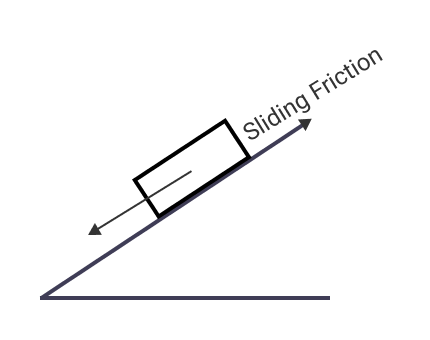
For a limited speed, the value of sliding friction will remain constant throughout the motion.
4. Rolling Friction
When we are rolling a body on the surface of another body, there will be an opposing frictional force between two surfaces in contact. It is called Rolling Friction.
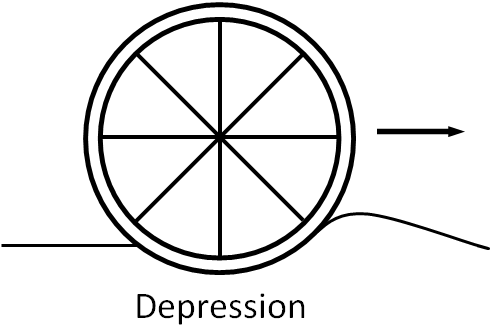
When a body is rolling over a surface, the surface is compressed, due to which the body has to climb the compressed surface.
Also, since the body is rolling, some parts of the body are continuously detached from the surface. The adhesive force between the surface of the rolling body and the surface opposes this phenomenon and generates rolling friction.
Note: Suppose we have a body of the same mass, then it is easier to roll the body than to slide it. This is because, for the same weight, the rolling friction is much less than sliding friction.
Since there is a less opposing force, it is easier to roll the body.
Graph of different types of friction
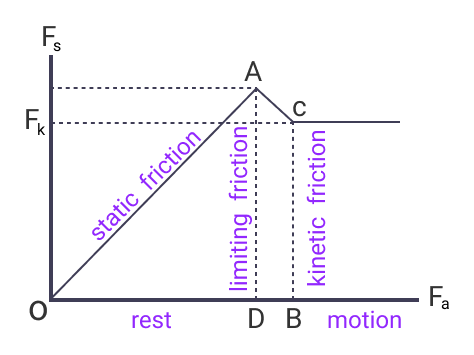
A graph between the applied force and types of friction is shown in the figure above.
Here,
- OD represents that the body is at rest.
- OA represents static friction.
- AD represents the maximum static friction called limiting friction.
- The region beyond D represents that the body is in motion.
- CB represents kinetic friction.
Related Article